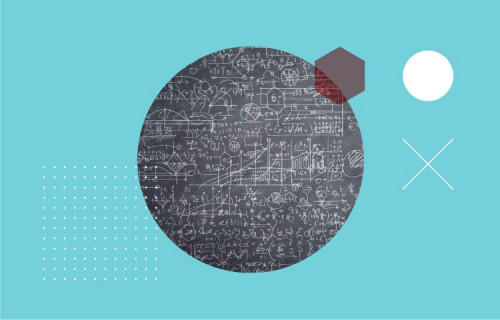
Mastering Dashboard Success: Requirements & Storytelling
Although it is essential, the value your dashboard can achieve is not entirely dependent on the data you have available. It can become equally important to show the story behind your data in the most efficient way possible while critically assessing the audience for and purpose of your dashboard. A lack of focus on those fundamentals can result in an abundance of reports created without properly considering business needs.
Target audiences will be overrun with purposeless dashboards that do not show the required insights. Ultimately, dashboards have a low adoption rate, the traditional way of working in siloed environments continues, and potential growth through data-driven insights slumbers down. Sounds familiar? But how to get the right dashboard success requirements?
Common Mistakes in Dashboard Success
Suboptimal internal support:
- Setting goals: An unclear, unstructured, or incomplete start to a dashboarding project results in improper dashboard requirements. Asking the right questions and gathering the necessary people is decisive in setting proper goals. Failing to do so creates ambiguity and does not deliver the intended insights.
- Setting rules: Not setting clear rules regarding roles, responsibilities, and the way of work can also result in ambiguity and an inefficient use of resources. One of the most underestimated responsibilities is validating results.
Dashboard inefficiencies:
- Data Interpretability: When developing a dashboard, the focus should not be on fancy or complex ways to visualize your data but on using the best visualizations to tell the story within your data. Insights should be shown quickly and chronologically in the clearest way possible.
- Design: Although it can be tempting to use bright colors, multiple fonts, or flashy visuals, this all comes at the expense of a dashboard’s purpose: to show the unbiased message that data can reveal. Inefficient and inconsistent use of layout or positioning within or between dashboards can harm your data story.
- Dashboard requirements: A common pitfall is to lose track of requirements when building a dashboard. It is important always to consider the target audience and goal during dashboard development.
Lack of user engagement:
- User involvement: Users are often involved early in the process but left out until the final product is delivered. This long gap without feedback can lead to reports that do not meet user needs, decreasing the willingness to adopt a new dashboard.
- Technical development: Users may find new tools like Power BI daunting and prefer sticking to familiar tools like Excel, fearing job automation.
Dashboard Success Requirements
From these common pitfalls, suboptimal internal support and dashboard inefficiencies can be structurally addressed. They require a focus on the true purpose of your dashboard, which makes the dashboard both optimally functional and aligned with your organization’s needs.
Support & Stakeholder Management
Sufficient internal support throughout both the development and ongoing use of the dashboards is crucial. This begins with a deep understanding of the dashboard’s purpose and end users. What do they want to see, and more importantly, how do they want to see it? This understanding forms the foundation of your dashboard’s design and directly impacts how easily the data can be interpreted. Regular engagement with users ensures that the dashboard continues to meet their needs and tells a logical and coherent story. Remember, what seems obvious to a developer may not be clear to end users.
Let’s get practical – what can be done to get to the dashboard’s essentials? Enter our BI Canvas. This tool covers all the essential components that determine the effectiveness and adoption of your dashboard. Think of it as the blueprint for your dashboard. By carefully filling in each component, you ensure that you’re telling the right story, to the right audience, in the right way. By using this method, you can systematically address the key areas of dashboard development, ensuring that your dashboards are not only functional but also insightful and widely adopted.
Data storytelling
The design of your dashboard is pivotal in making data look straightforward. Moreover, the importance of making your data as simple and quickly ingestible as possible can’t be stressed enough. The essence is to show the message that is hidden in your data that contains the answer to your organization’s needs and thus, the focus should be on those two things; your data story & your business requirements. A dashboard must communicate that message as clearly and quickly as possible.
There are many ways in which the story in your data can be conveyed by a dashboard. It can be done by disrupting changes in the current structure of your dashboard and the way-of-work of dashboard development, or by many small adjustments that altogether improve your storyline. By focusing on visual design, filtering, context, clear requirements and framing, the data in your dashboard can be converted into insights!
Curious about what the BI Canvas entails or how to improve data storytelling? Stay tuned for an update in the near future!

Artificial Intelligence is ready!
In this interview, Jonathan Aardema talks with Prof. Eric Postma (professor of Cognitive Science and Artificial Intelligence at the University of Tilburg) about the why, how, and what of artificial intelligence applications. What do we see in practice, and what does science say about it?

Visiting London for the Tableau Partner Executive Kick-Off 2020
Every year Tableau invites its most valuable partners to kick off the new year together. The theme for this year was Accelerate, so let’s get right to the point. This exciting event was focused on three main areas.

Mastering DAX
Keeping your skills up to date is crucial when you work with the newest technology. At Rockfeather, we challenge each other to be the best version of yourself. That’s why I attended the mastering DAX course. DAX (Data Analysis Expressions) is a formula expression language. Next to Power BI, DAX is applied in Excel Power Pivot and tabular models in SQL Server. Learn it once, use it tomorrow.